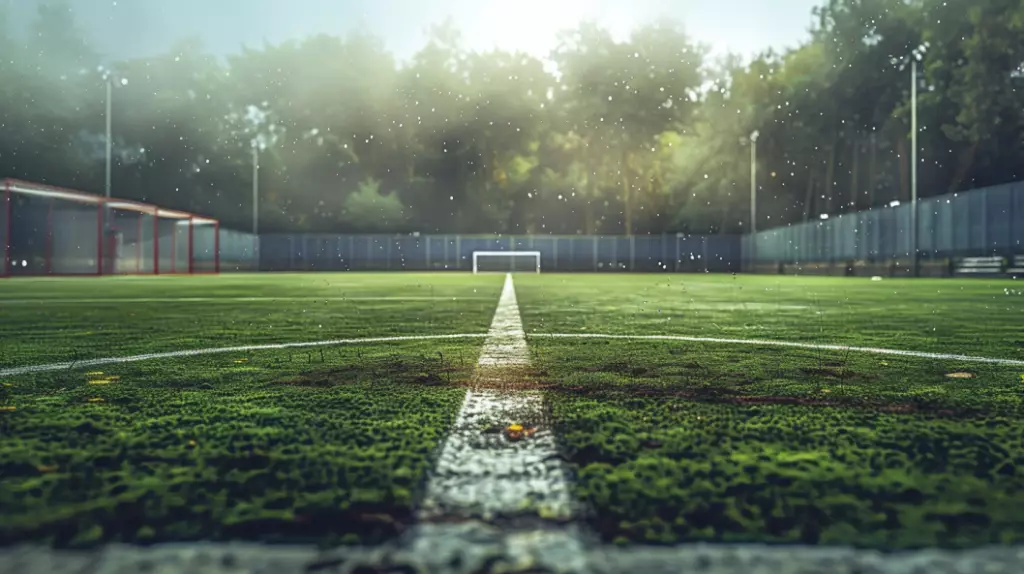One of the most crucial phases of play is the transition from defense to attack. Known as attacking transitions, this period often determines the momentum and outcome of a game. Teams that excel in these moments can swiftly turn defensive situations into potent attacking opportunities, catching their opponents off guard and capitalizing on their vulnerabilities.
Attacking transitions in football is a crucial game aspect that can make or break a team’s success. In modern football, where the game’s pace is faster than ever, mastering attacking transitions has become even more important. This article will delve into the various aspects of attacking transitions, including what they are, why they are important, and how players can improve their skills.
What are Attacking Transitions in Football?
Attacking transitions refer to when a team quickly transitions from defense to attack after winning possession of the ball—the ability to swiftly and effectively switch from defending to attacking sets successful teams apart. There are two main types of attacking transitions: direct and indirect.
Direct attacking transitions involve quickly launching a counter-attack immediately after regaining possession. This often involves long passes or dribbles to bypass the opposition’s defense and catch them off guard. Indirect attacking transitions, on the other hand, involve a more patient build-up play after winning possession. The team takes their time to move the ball forward, looking for openings in the opposition’s defense.
The Importance of Quick-Attacking Transitions in Modern Football
Modern football has evolved significantly, with teams focusing on high-intensity pressing and quick counter-attacks. The game is played much faster, leaving little time for teams to settle into their defensive shape. As a result, quick attacking transitions have become crucial for success.
Attacking transitions allows teams to catch their opponents off guard and exploit gaps or spaces left behind when they lose possession. By swiftly transitioning from defense to attack, teams can create scoring opportunities before their opponents regroup and organize their defense.
How to Effectively Transition from Defense to Attack
Teams must follow a few key steps to transition from defense to attack effectively. Firstly, it is important for players to quickly recognize when they have won possession and immediately switch their mindset from defending to attacking. This requires good awareness and anticipation skills.
Secondly, communication and teamwork are vital during attacking transitions. Players must communicate with each other to ensure everyone is on the same page and knows where to move the ball. Quick, accurate passing is essential to maintain the momentum of the attack.
Lastly, players must be willing to take risks and be proactive in decision-making. Attacking transitions often require players to make split-second decisions, such as whether to pass, dribble, or shoot. Being confident in their abilities and trusting their instincts is crucial for success.
The Role of Midfielders in Attacking Transitions
Midfielders play a crucial role in attacking transitions, often linking defense and attack. They are responsible for quickly moving the ball forward and creating scoring opportunities for their team.
In attacking transitions, midfielders must have good vision and passing ability to distribute the ball accurately to their teammates. They must also possess good dribbling skills to bypass opponents and create space for themselves and their teammates.
Midfielders should focus on positioning and ball movement to improve their attacking transition skills. They should constantly look for spaces to exploit and be ready to receive the ball from their teammates. Additionally, midfielders should work on their decision-making skills, as they often have to make quick choices on whether to pass, shoot, or dribble.
The Art of Counter-attacking: Tips and Tricks

Counter-attacking is a specific type of attacking transition that involves quickly launching an attack after winning possession deep in one’s half. It requires speed, precision, and coordination among the players involved.
To effectively counter-attack, teams must first have a solid defensive structure that allows them to win possession quickly. Once possession is regained, players must immediately look for opportunities to launch a fast break. This often involves long passes or dribbles to bypass the opposition’s defense.
Timing is crucial in counter-attacking. Players must recognize when the opposition’s defense is out of position and exploit the spaces left behind. Quick decision-making and accurate passing are essential to maintain the speed and momentum of the counter-attack.
The Significance of Wing Play in Attacking Transitions
Wing play is vital to attacking transitions, allowing teams to stretch the opposition’s defense and create space in the middle of the pitch. Wingers are responsible for providing width and stretching the play, which opens up opportunities for their teammates to exploit.
In attacking transitions, wingers must have good pace and dribbling skills to beat their opponents and deliver accurate crosses into the box. They must also possess sound decision-making skills to know when to take on their opponents or pass the ball.
To improve their attacking transition skills, wingers should focus on speed and agility. They should work on their dribbling skills and practice delivering accurate crosses into the box. Additionally, wingers should work on their defensive abilities, as they often have to track back and help out in defense during attacking transitions.
The Impact of Individual Player Skills on Attacking Transitions
Individual player skills can have a significant impact on attacking transitions. Players with exceptional speed, agility, and dribbling ability can bypass opponents and create scoring opportunities for their team. Likewise, players with good vision and passing ability can quickly move the ball forward and set up their teammates for goals.
One example of a player with exceptional attacking transition skills is Lionel Messi. His quickness, agility, and dribbling ability allow him to bypass opponents and create scoring opportunities for himself and his teammates. His vision and passing ability also make him a threat in attacking transitions.
Another example is Kevin De Bruyne. His passing ability and vision allow him to move the ball forward quickly and create scoring opportunities for his teammates. His long-range passing and accurate crosses make him a valuable asset in attacking transitions.
The Use of Set Pieces in Attacking Transitions
Set pieces, such as corners and free kicks, can effectively attack transitions. When a team wins a set piece, they can quickly transition from defense to attack and catch their opponents off guard.
For example, when a team wins a corner kick, they can quickly take the corner and deliver the ball into the box before the opposition’s defense can organize. This can create scoring opportunities for the attacking team.
Similarly, when a team wins a free kick in their half, they can quickly take it and launch a counter-attack. They can create scoring opportunities by catching the opposition’s defense out of position before their opponents regroup.
The Psychological Aspect of Attacking Transitions
Attacking transitions not only requires physical skills but also mental toughness. Players must handle the pressure and make quick decisions under intense circumstances.
Players should focus on their concentration and focus to improve their mental toughness during attacking transitions. They should practice staying calm and composed in high-pressure situations and trust their instincts.
Visualization techniques can also help improve mental toughness during attacking transitions. Players can visualize themselves successfully executing attacking transitions and scoring goals. This can help build confidence and improve performance on the field.
The Future of Attacking Transitions in Football: Trends and Innovations
The future of attacking transitions in football will likely see further advancements in technology and tactics. With the increasing use of data analytics and video analysis, teams will have more information to improve their attacking transition strategies.
Additionally, advancements in sports science and player-tracking technology will allow teams to understand better the physical demands of attacking transitions. This will enable them to tailor their training programs to improve their players’ fitness and performance. Tactical innovations like false nines and inverted wingers will likely impact future attacking transitions. These tactics can create new opportunities for teams to exploit spaces and create scoring opportunities.
Attacking transitions are a crucial aspect of modern football that can make or break a team’s success. Players and teams can create scoring opportunities and catch their opponents off guard by mastering the art of attacking transitions. It requires physical skills, tactical awareness, and mental toughness.
Players should improve their speed, agility, dribbling, passing accuracy, and decision-making skills to excel in attacking transitions. Additionally, they should work on their mental toughness and concentration to handle the pressure of quick decision-making.
Attacking transitions are an essential part of modern football that players should strive to master. By continuously improving their skills, players can contribute to their team’s success and significantly impact the game.
If you’re interested in learning more about football tactics and strategies, this article on “The Importance of Set Pieces in Modern Football” is fascinating. Set pieces play a crucial role in a team’s attacking and defensive strategies, and understanding their significance can greatly impact the outcome of a match. To delve deeper into this topic, check out this insightful article on kicka.football. It provides valuable insights into how teams utilize set pieces to their advantage and comprehensively analyzes their impact on the game.






